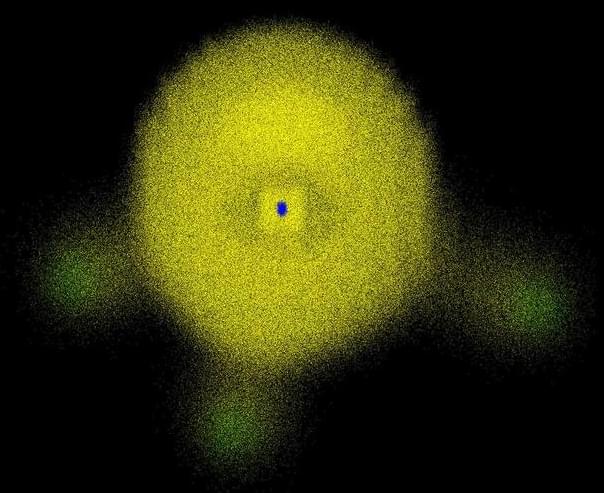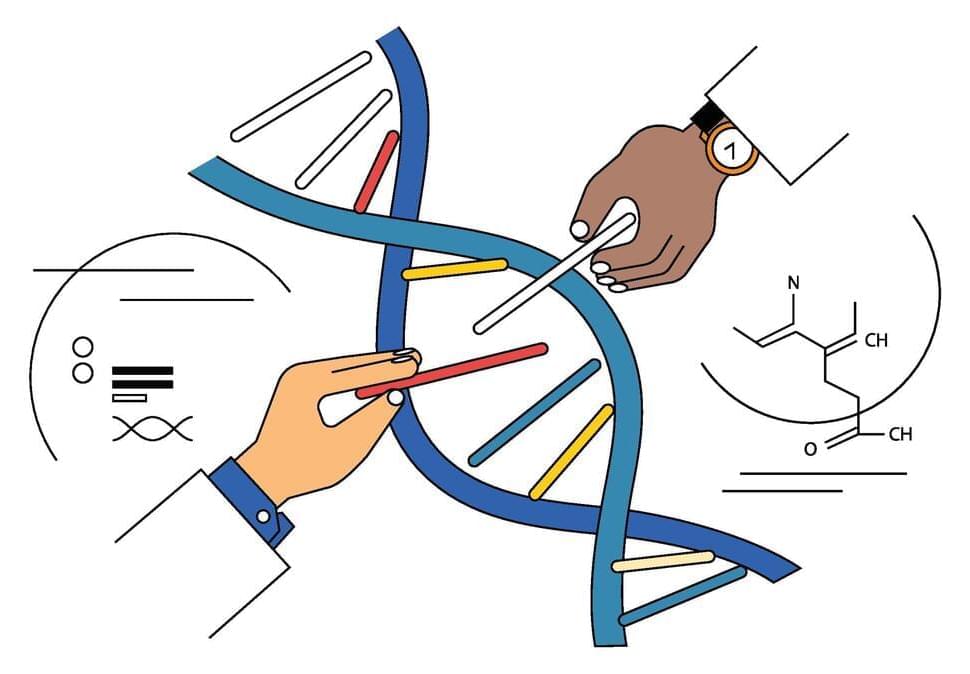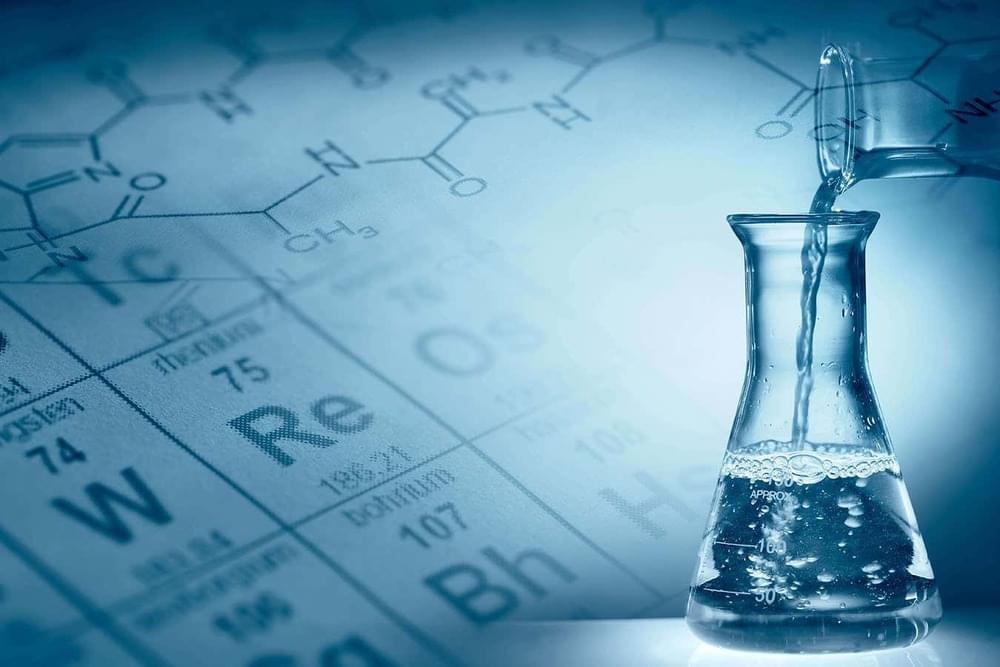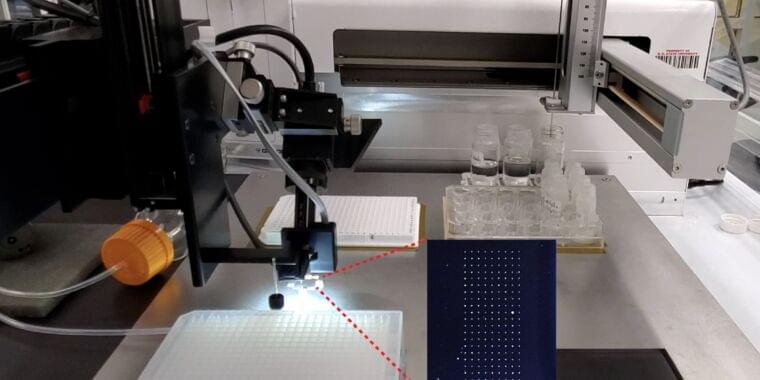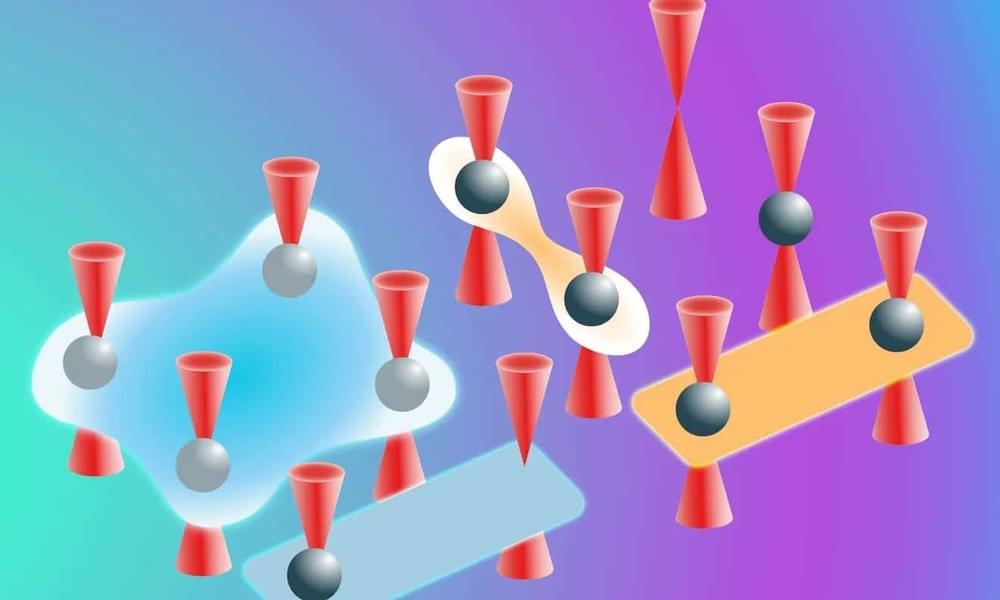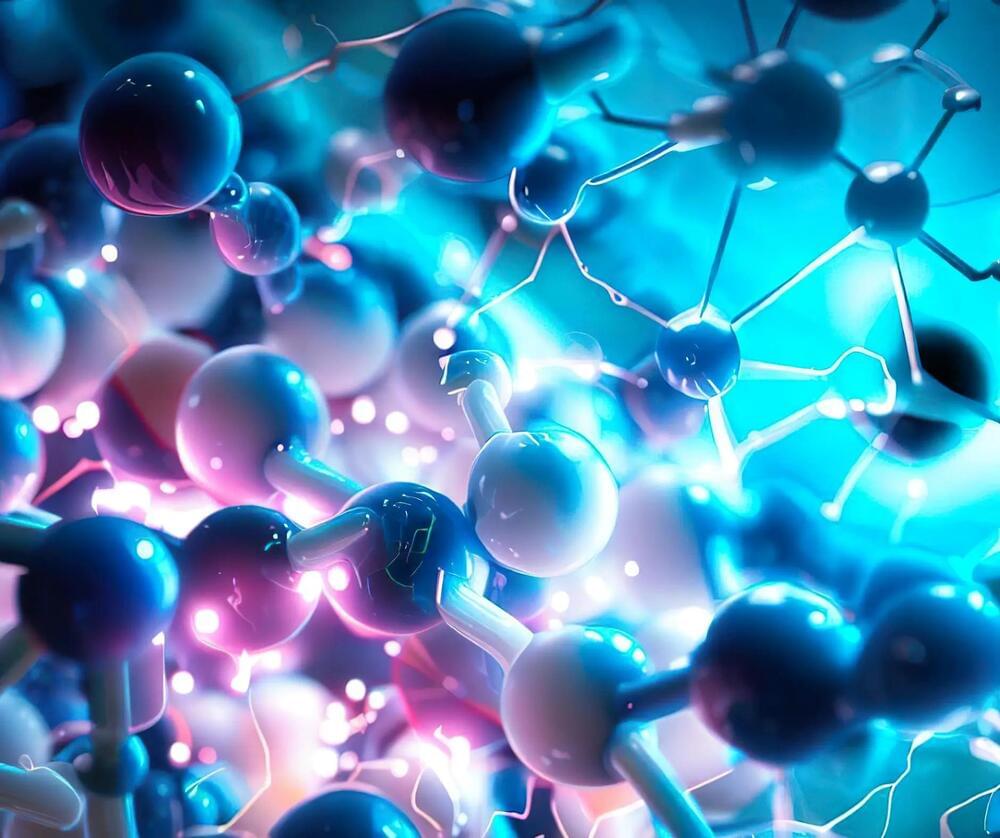Archive for the ‘chemistry’ category: Page 104
Aug 26, 2023
Why the empty atom picture misunderstands quantum theory
Posted by Shubham Ghosh Roy in categories: chemistry, particle physics, quantum physics, space
The association between this mass concentration and the idea that atoms are empty stems from a flawed view that mass is the property of matter that fills a space. However, this concept does not hold up to close inspection, not even in our human-scale world. When we pile objects on top of each other, what keeps them separated is not their masses but the electric repulsion between the outmost electrons at their touching molecules. (The electrons cannot collapse under pressure due to the Heisenberg uncertainty and Pauli exclusion principles.) Therefore, the electron’s electric charge ultimately fills the space.
Anyone taking Chemistry 101 is likely to be faced with diagrams of electrons orbiting in shells.
In atoms and molecules, electrons are everywhere! Look how the yellow cloud permeates the entire molecular volume in Figure 1. Thus, when we see that atoms and molecules are packed with electrons, the only reasonable conclusion is that they are filled with matter, not the opposite.
Aug 26, 2023
Harvard scientists have identified a drug combo that may reverse aging in just one week: ‘A step towards affordable whole-body rejuvenation’
Posted by Shubham Ghosh Roy in categories: biotech/medical, chemistry, life extension
The “chemical cocktail” helped reverse aging in mice, but some experts are skeptical about whether it will work in humans.
Aug 25, 2023
Plasma breakthrough could enable better hypersonic weapons, spacecraft
Posted by Saúl Morales Rodriguéz in categories: chemistry, military, particle physics
A potential new way to protect sensitive electronics from the extreme heat generated by flying at high speed could give the United States an edge in the race to deploy hypersonic missiles and new spacecraft.
A July research paper in the American Chemical Society’s journal ACS Nano describes one potential solution that uses focused plasma, the photons and highly charged particles that make up the so-called fourth state of matter. If the method bears out in further research, it could usher in hypersonic weapons with much more advanced electronic guidance and could even enable on-the-ground weapons to evade heat sensors.
The breakthrough grew out of efforts to use a laser to measure the temperature of electronics in plasma-facing environments, work the Air Force is supporting through a grant at the University of Virginia, said professor Patrick Hopkins, one of the researchers on the paper.
Aug 25, 2023
How mRNA Could Safely Replace Blood Stem Cell Transplantation
Posted by Arthur Brown in categories: biotech/medical, chemistry, genetics, life extension
This story is part of a series on the current progression in Regenerative Medicine. In 1999, I defined regenerative medicine as the collection of interventions that restore to normal function tissues and organs that have been damaged by disease, injured by trauma, or worn by time. I include a full spectrum of chemical, gene, and protein-based medicines, cell-based therapies, and biomechanical interventions that achieve that goal.
As part of a trio of stories on advances in stem cell gene therapy, this piece discusses how to alter blood stem cells using mRNA technology. Previous installments describe how the same platform could reinvent how we prepare patients for bone marrow transplants and correct pathogenic DNA.
At present, the only way to cure genetic blood disorders such as sickle cell anemia and thalassemia is to reset the immune system with a stem cell transplantation. Only a fraction of patients elects this procedure, as the process is fraught with significant risks, including toxicity and transplant rejection. A preclinical study published in Science explores a solution that may be less toxic yet equally effective: mRNA technology. The cell culture and mouse model experiments offer a compelling avenue for future research to enhance or replace current stem cell transplantations altogether.
Aug 25, 2023
Neuroscience Breakthrough — New Images Capture Unseen Details of the Synapse
Posted by Genevieve Klien in categories: chemistry, neuroscience
Scientists have created one of the most detailed 3D images of the synapse.
A synapse is a specialized junction between nerve cells that allows for the transfer of electrical or chemical signals, through the release of neurotransmitters by the presynaptic neuron and the binding of receptors on the postsynaptic neuron. It plays a key role in communication between neurons and in various physiological processes including perception, movement, and memory.
Aug 25, 2023
A map of every conceivable molecule could be possible with AI
Posted by Kelvin Dafiaghor in categories: biotech/medical, chemistry, robotics/AI
A map of all chemicals that places compounds with similar properties next to each other could speed up the process of discovery for everything from drugs to materials.
Aug 24, 2023
New robot searches for solar cell materials 14 times faster
Posted by Genevieve Klien in categories: chemistry, robotics/AI, solar power, sustainability
Earlier this year, two-layer solar cells broke records with 33 percent efficiency. The cells are made of a combination of silicon and a material called a perovskite. However, these tandem solar cells are still far from the theoretical limit of around 45 percent efficiency, and they degrade quickly under sun exposure, making their usefulness limited.
The process of improving tandem solar cells involves the search for the perfect materials to layer on top of each other, with each capturing some of the sunlight the other is missing. One potential material for this is perovskites, which are defined by their peculiar rhombus-in-a-cube crystal structure. This structure can be adopted by many chemicals in a variety of proportions. To make a good candidate for tandem solar cells, the combination of chemicals needs to have the right bandgap—the property responsible for absorbing the right part of the sun’s spectrum—be stable at normal temperatures, and, most challengingly, not degrade under illumination.
The number of possible perovskite materials is vast, and predicting the properties that a given chemical composition will have is very difficult. Trying all the possibilities out in the lab is prohibitively costly and time-consuming. To accelerate the search for the ideal perovskite, researchers at North Carolina State University decided to enlist the help of robots.
Aug 24, 2023
Scientists develop fermionic quantum processor
Posted by Shubham Ghosh Roy in categories: chemistry, computing, particle physics, quantum physics
Fermionic atoms adhere to the Pauli exclusion principle, preventing more than one from simultaneously being in the same quantum state. As a result, they are perfect for modeling systems like molecules, superconductors, and quark-gluon plasmas where fermionic statistics are critical.
Using fermionic atoms, scientists from Austria and the USA have designed a new quantum computer to simulate complex physical systems. The processor uses programmable neutral atom arrays and has hardware-efficient fermionic gates for modeling fermionic models.
The group, under the direction of Peter Zoller, showed how the new quantum processor can simulate fermionic models from quantum chemistry and particle physics with great accuracy.
Aug 24, 2023
Shattering Conventional Wisdom — Surprising Discovery Could Transform the Future of Electrochemical Devices
Posted by Paul Battista in categories: biotech/medical, chemistry, computing, health, wearables
Researchers from the University of Cambridge have unveiled a surprising discovery that holds the potential to reshape the landscape of electrochemical devices. This new insight opens the door for the creation of cutting-edge materials and paves the way for enhancements in sectors like energy storage, neuromorphic computing, and bioelectronics.
Electrochemical devices rely on the movement of charged particles, both ions, and electrons, to function properly. However, understanding how these charged particles move together has presented a significant challenge, hindering progress in creating new materials for these devices.
In the rapidly evolving field of bioelectronics, soft conductive materials known as conjugated polymers are used for developing medical devices that can be used outside of traditional clinical settings. For example, this type of material can be used to make wearable sensors that monitor patients’ health remotely or implantable devices that actively treat disease.

